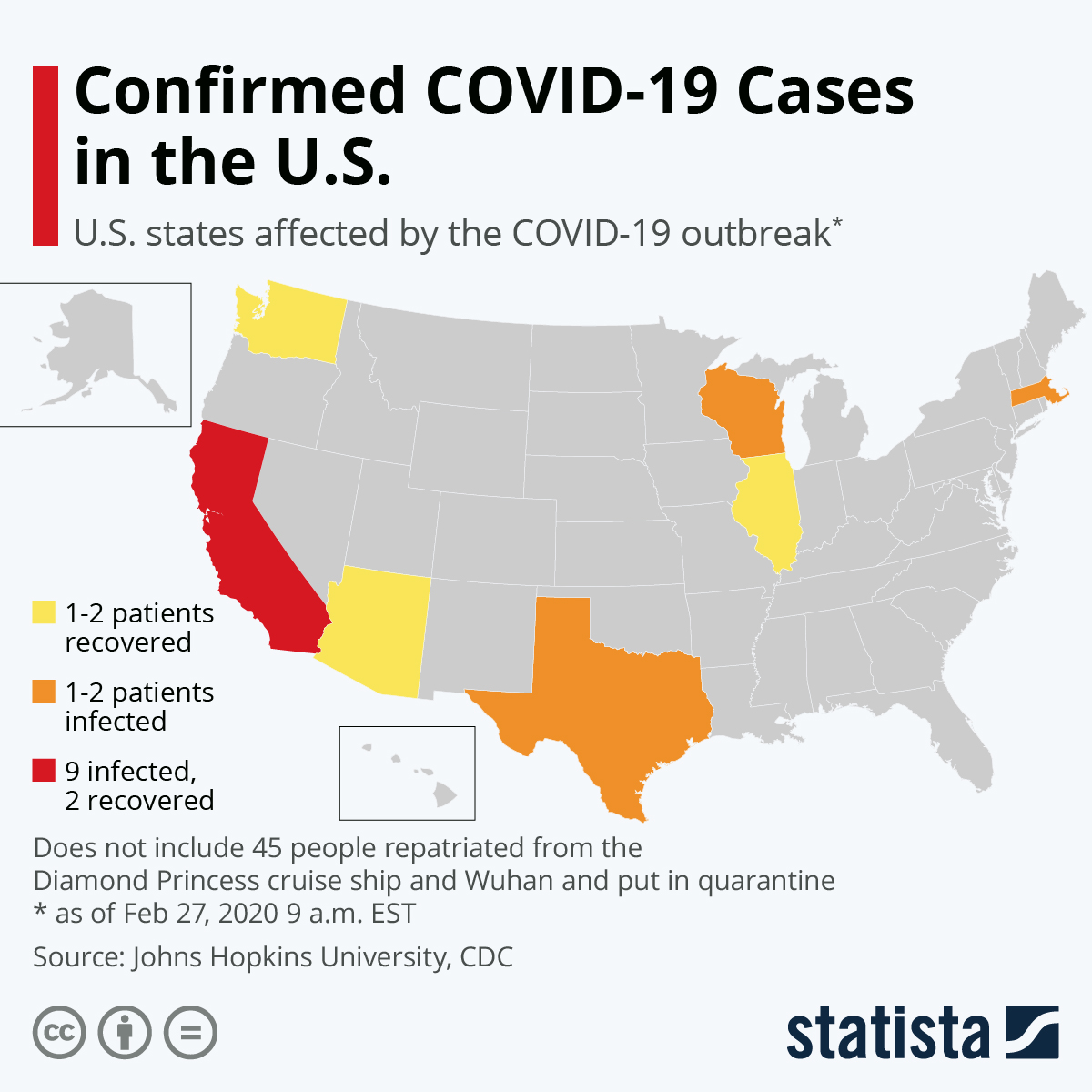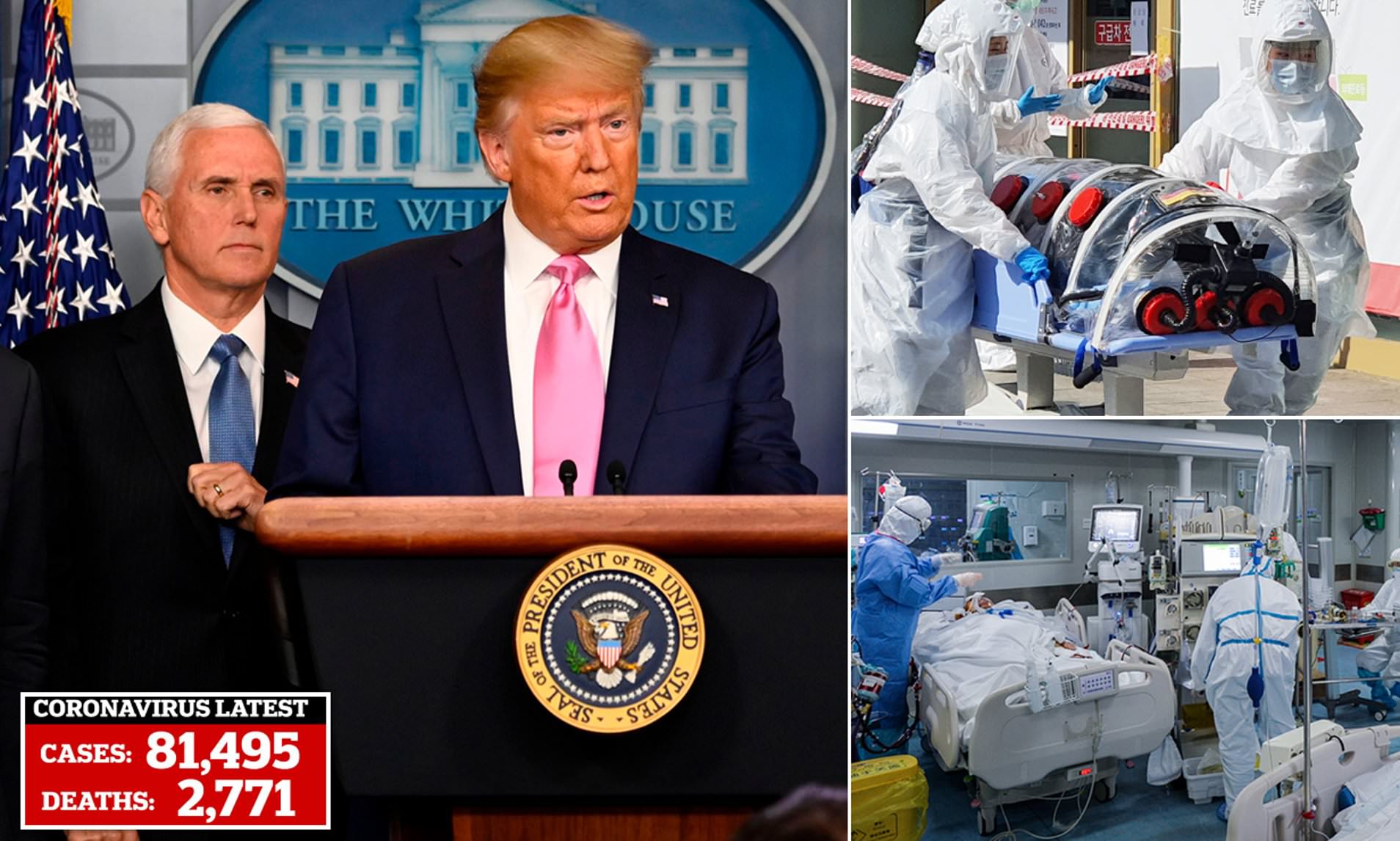

U.S. CDC confirms first 'unknown origin' coronavirus case in northern California resident who hasn't recently traveled abroad or been exposed to an infected patient.Trump announced Vice-President Mike Pence will be in charge of the nation's response to the disease in a press conference on Feb 26.
Just as the COVID-2019 epidemic appears to be under control in China, new and serious outbreaks have occurred in South Korea, Italy, Japan, Iran and elsewhere. The virus seems to be ubiquitous and unstoppable. While I am hopeful that the epidemic in China will be over by the end of March, I begin to worry about the possibility of overseas visitors to China bringing the COVID-2019 virus back, starting another episode of the epidemic again. China cannot afford to have its hard-won and costly victory over the COVID-2019 virus annulled by a few infected visitors from abroad.
What China can and should do is to maintain the strictest quarantine measures against all entrants into China, including its own nationals, who are either from or have been in or through seriously infected areas during the previous fourteen days. They should all be required to undergo a quarantine of fourteen days in government-furnished isolation facilities. To enable and facilitate such a requirement, the Chinese airports and ports of entry should be limited to Beijing, Shanghai, Tianjin, Guangzhou and Shenzhen, with ready isolation facilities nearby. This measure may sound draconian and will cause disruption to not only tourism but to all commercial activities including international trade and cross-border investment between China and all other countries. However, this is the only safe and sure way to prevent a recurrence of a COVID-2019 epidemic in China. China will switch from being a blocked country to a blocking country. Moreover, it is uncertain how long this situation will last as it depends on how quickly other countries can succeed in controlling the COVID-2019 virus.
While it is true that China should and could have acted more quickly to close off Hubei and Wuhan and implement a full lockdown, these stringent measures were instrumental in confining the spread of the virus mostly to Hubei and within Hubei to Wuhan. They enabled China to keep the epidemic under control. However, it is not clear whether other countries around the world have the administrative ability and the social discipline to do the same. Moreover, there is now some question whether Wuhan was the primary originating source of the COVID-2019 virus, since the Patient Zero of Italy as well as a Japanese case did not have any direct or indirect connection with China but they shared a common history of having vacationed in Hawaii. A recently identified Northern Californian case also did not have any connection with China. So it is possible that the primary originating source of the virus is from elsewhere. Further testing and re-testing of U.S. influenza cases that occurred over the past six months, especially those that resulted in fatalities, may throw some light on this question.
One might ask: If every country adopts such a stringent entry policy for the protection of its citizens, does it mean the end of globalisation? I believe this is not the end, but the beginning of a safer and more stable form of globalisation that is less susceptible to potential disruption.
I recall that years ago, I would travel not only with a passport, but also with a small yellow-coloured booklet which recorded all my vaccinations and inoculations, which would be examined upon my entry into another country. I would need vaccinations against smallpox, cholera and other diseases, and occasionally a shot of gamma globulin. What this epidemic has taught us is the necessity of reinstating some form of such requirements if we were to continue to be able to travel freely internationally.
The destination country of a traveller would need to know his or her recent health, including vaccinations and possibly ad hoc antigen-specific tests, and travel histories. It is actually quite straightforward for an international authority such as the World Health Organization (WHO) to maintain such a record in digital form and in real time, so that it is readily available for inspection whenever a traveller crosses a border. For example, if and when a vaccine is available for COVID-2019, it should be required for those who wish to be exempted from the mandatory quarantine requirement. This will also apply to other transmissible diseases and viruses in the future. A traveller without an acceptable WHO record will have to satisfy whatever other requirements that the destination country may impose, including a possibly lengthy quarantine period. If such a system can be implemented globally, then citizens of all countries can all be relieved that their foreign visitors will not pose a threat to their health.
However, simply controlling the borders is not enough. It is extremely important to prevent domestic transmission of diseases and viruses by unidentified domestic infected patients; otherwise, the number of new domestic infected patients will rise in a combinatorial manner. The transmission of the coronavirus, like the SARs virus and the more common influenza virus, is almost entirely through direct or indirect physical contact, between an infected patient and a potential patient, through the medium of a body fluid. Thus, the domestic population should be educated to take proper precautions not to have either direct or indirect physical contact with any other person, friend or stranger. This means adopting and maintaining good hygienic behaviour and practices. For example, one should forego shaking hands, or kissing and hugging. One should wear face masks, wash hands regularly, and refrain from touching one’s eyes, nose and mouth with one’s hands. In time, perhaps most doors can be sensor-operated and elevators can be voice-activated, so that even indirect physical contacts can be minimised. The transmission of a disease or virus will stop if everyone takes full proper precautions for his or her own self-protection.
An epidemic such as the COVID-2019, with its potential for disrupting or even halting all economic activities for months, provides yet another important justification for having reliable second sources for all critical supply chains. The China-U.S. trade war as well as the continuing technological rivalry between the two countries have already threatened to de-couple the established technological supply chains. But even without them, the epidemic shows that second sources are still indispensable. It is crucial for the world to have at least a second source for any link in any supply chain. Having a second source can be costly, but it also provides insurance against unexpected contingencies, such as an epidemic, a natural disaster, or even a war. It also prevents a supplier from over-exploiting its monopoly position. Not having a second source can sometimes prove to be even more costly as production is halted for the lack of a critical component.
The trade war and the epidemic together will cause nations to reconsider the benefits and costs of unfettered globalisation. If a country depends solely on the Middle East for its oil, it will be in serious trouble, even with a substantial oil inventory in storage, when war breaks out in the Middle East. Of course, a country can try to be totally self-sufficient, as the former Soviet Union and China did at one time, but it would be extremely costly. What we should expect to see in the future is “diversified globalisation”, so that no one country would be completely dependent on another as a sole source of supply of a critical resource, component or part. There will have to be a second source for everything. In the long run, the world will be better off having two or more competing suppliers for every good or service.
